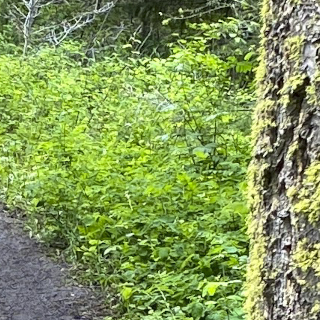Terraced Garden 2006
With support of a United States Forest Service (USFS) Heritage Stewardship Enhancement Grant for Region 1, the University of Montana (UM) under direction of Dr. Kelly J. Dixon began the first intensive archaeological and historical investigation of the terrace gardens site. Results of the 2006 fieldwork help to illuminate the history of the terraces, by starting to understand when the terraces were built, how they were built, what they grew, and when the site was abandoned. In addition, information learned during these small-scale investigations helped the field investigators plan the intensive three-week field school planned for the summer of 2007
April: Jen Childress, UM Graduate Student at the time, completed a National Register Nomination of the site, mapped the terraces, and cleared a majority of the dense vegetation off the site to make way for further work. This was the first systematic attempt to map the entire terrace network, and on closer examination, additional terraces that had blended into the slope appeared. There had been substantial decay to the small pit structure photographed in 1979, with almost all of its front rock walls collapsing.
September: Chris Merritt, UM Doctoral Student, Dr. Kelly J. Dixon, UM Assistant Professor, and C. Milo McLeod, Lolo National Forest Archaeologist, led an advanced field school at the project site with five UM students with an additional two Passport in Time (PIT) volunteers through the USFS. During this five-day project, students and volunteers put in almost four hundred hours of time excavating, collecting soil samples, and mapping various features at the terraces site. The crew had to primitive camp roughly a mile away from the terraces and a half mile from the trailhead, and commute everyday to the site by foot. Milo McLeod served as camp manager and camp cook during this phase of the project, and all with remember fondly Milo’s famous spam and eggs for breakfast. The crews excavated a two by two meter excavation unit directly in front of the small pit feature that was standing in 1979. Only a few hundred artifacts were discovered, mostly nails and tar paper. This information helped to recover the construction techniques and materials used to build the small pit structure on the terraces.
